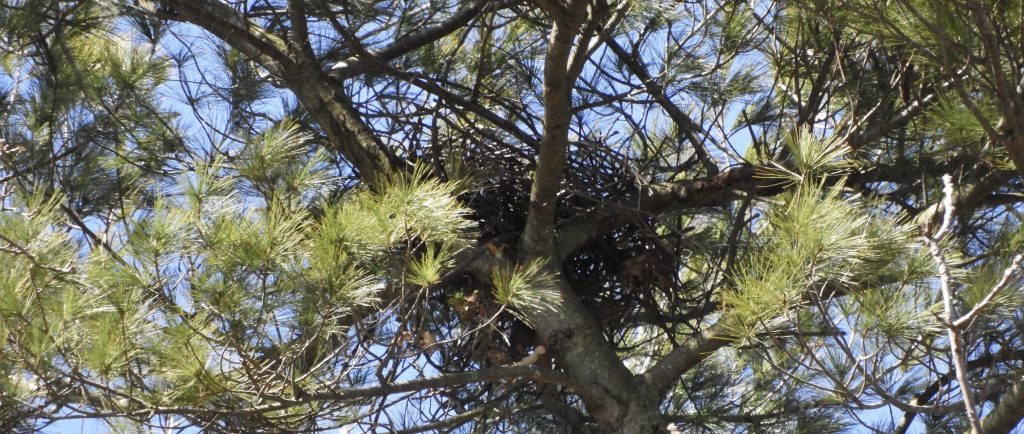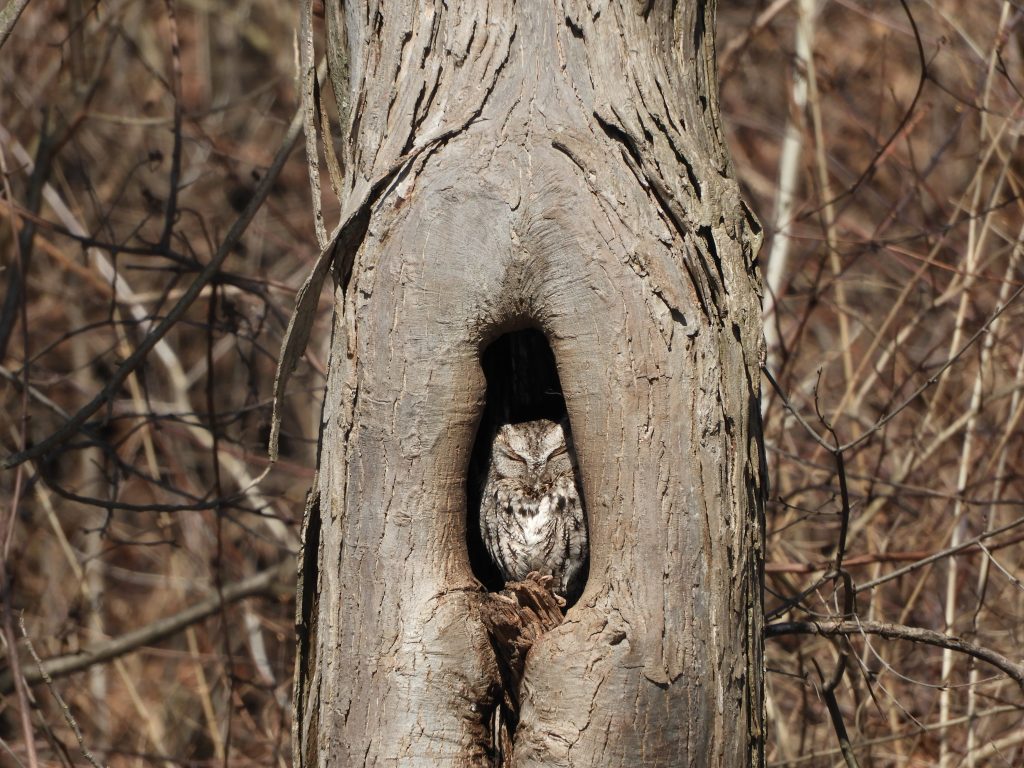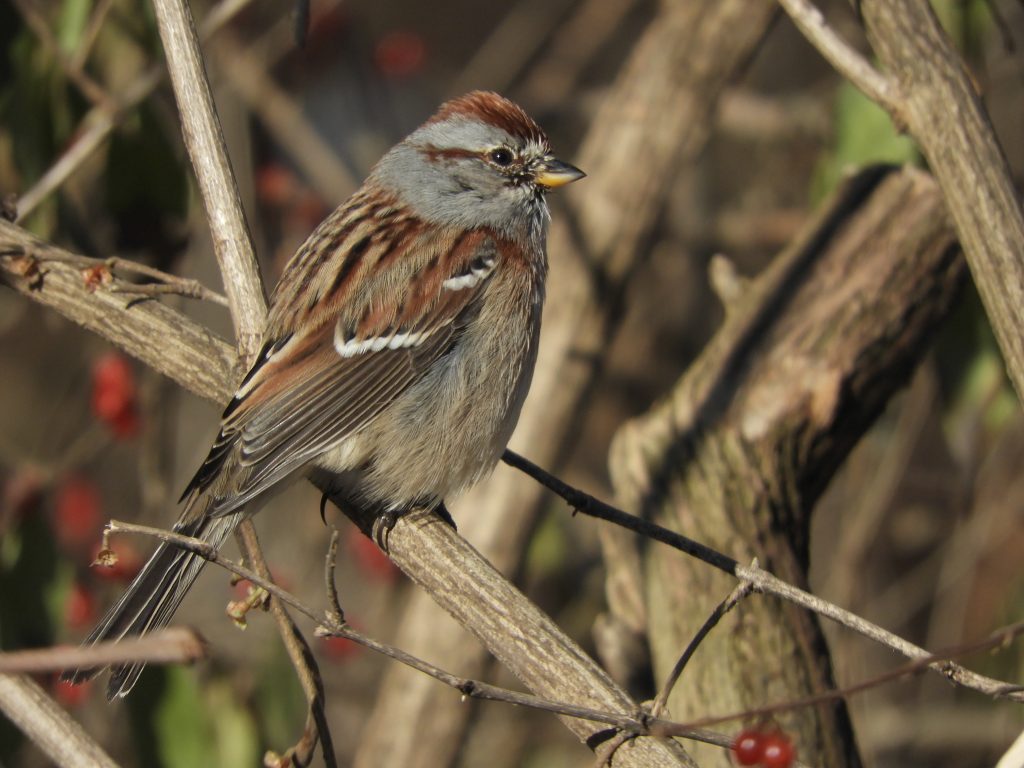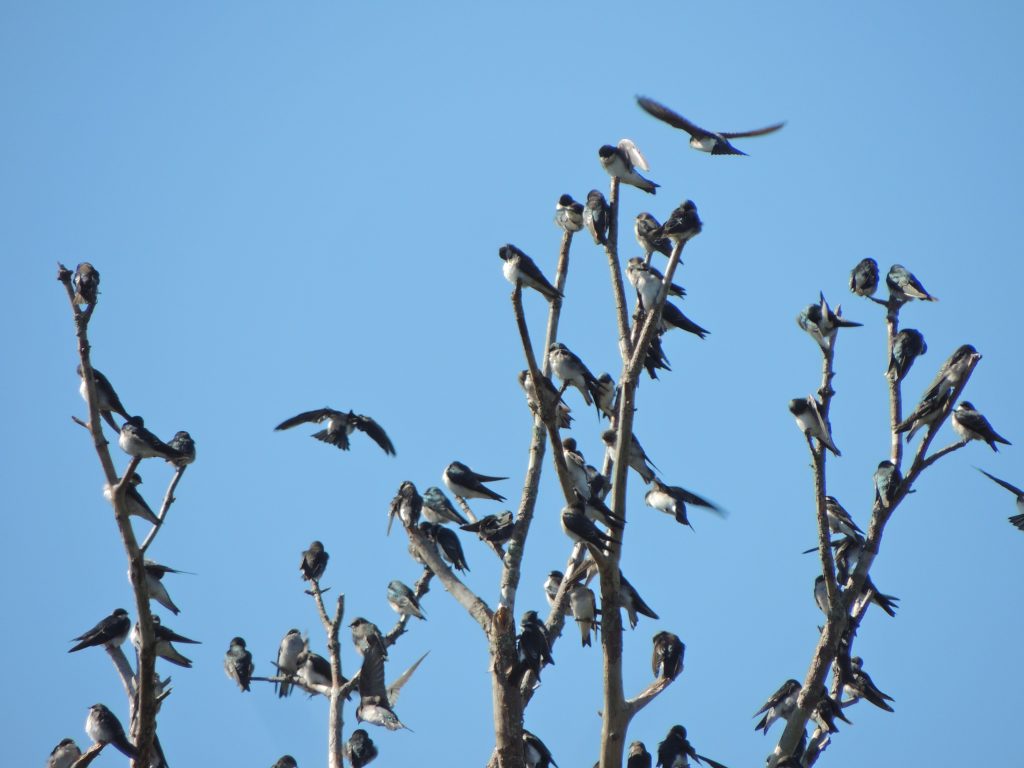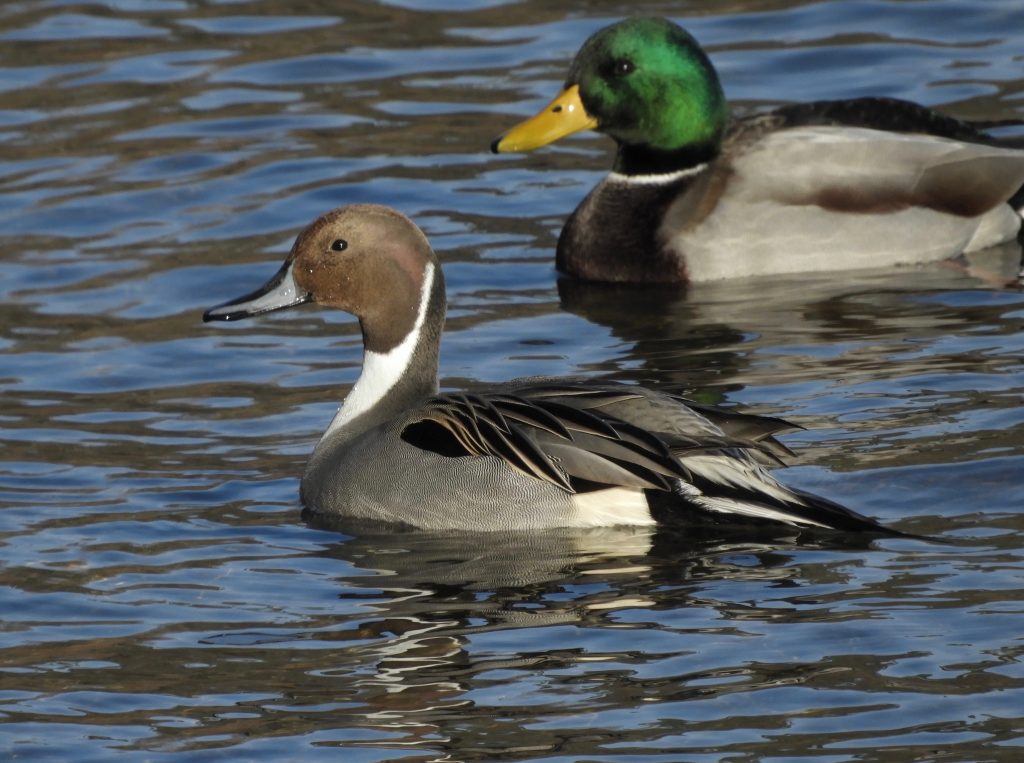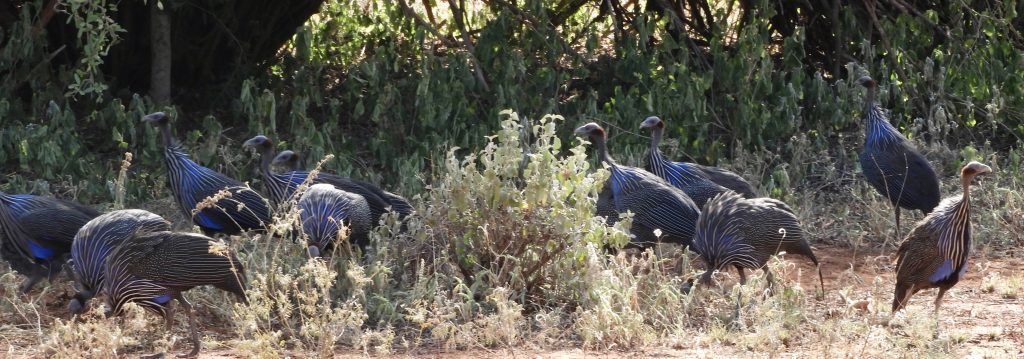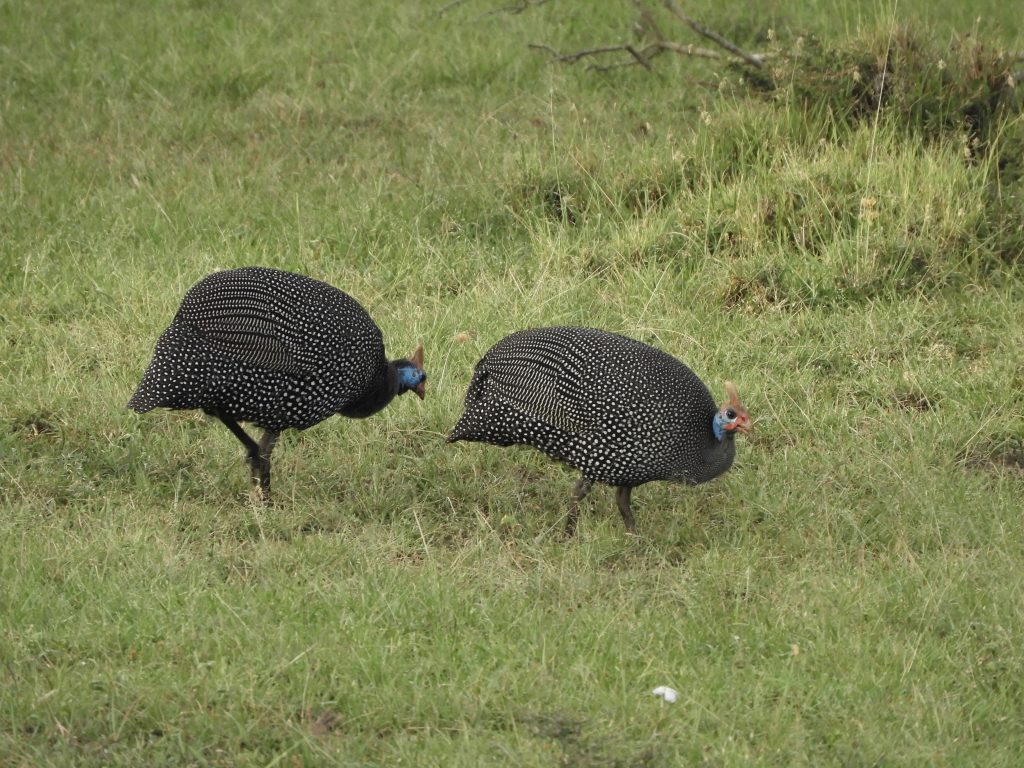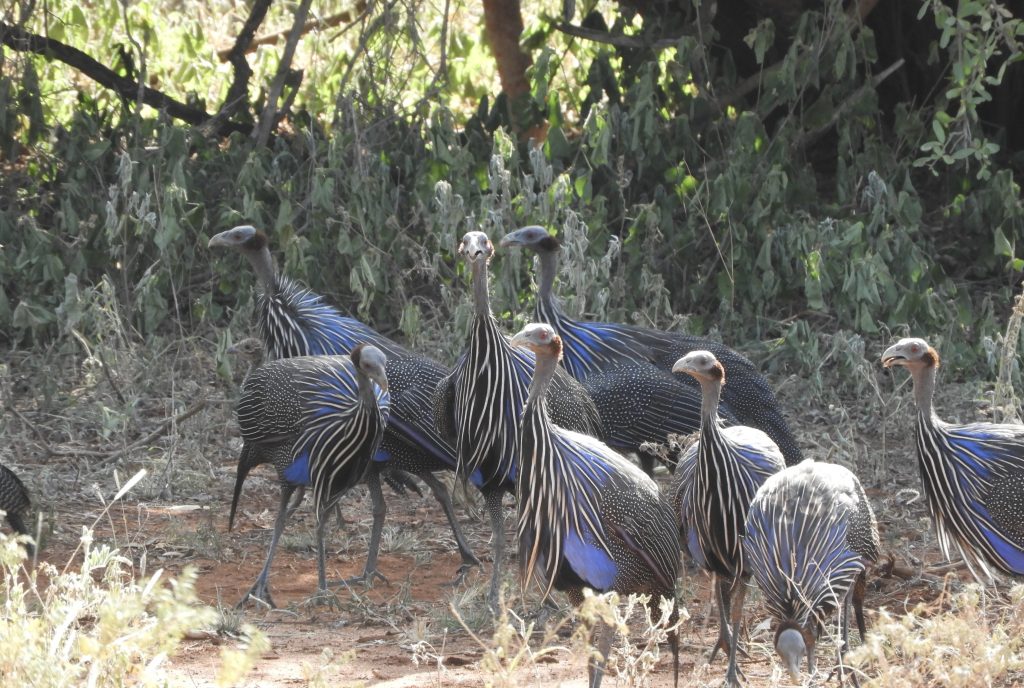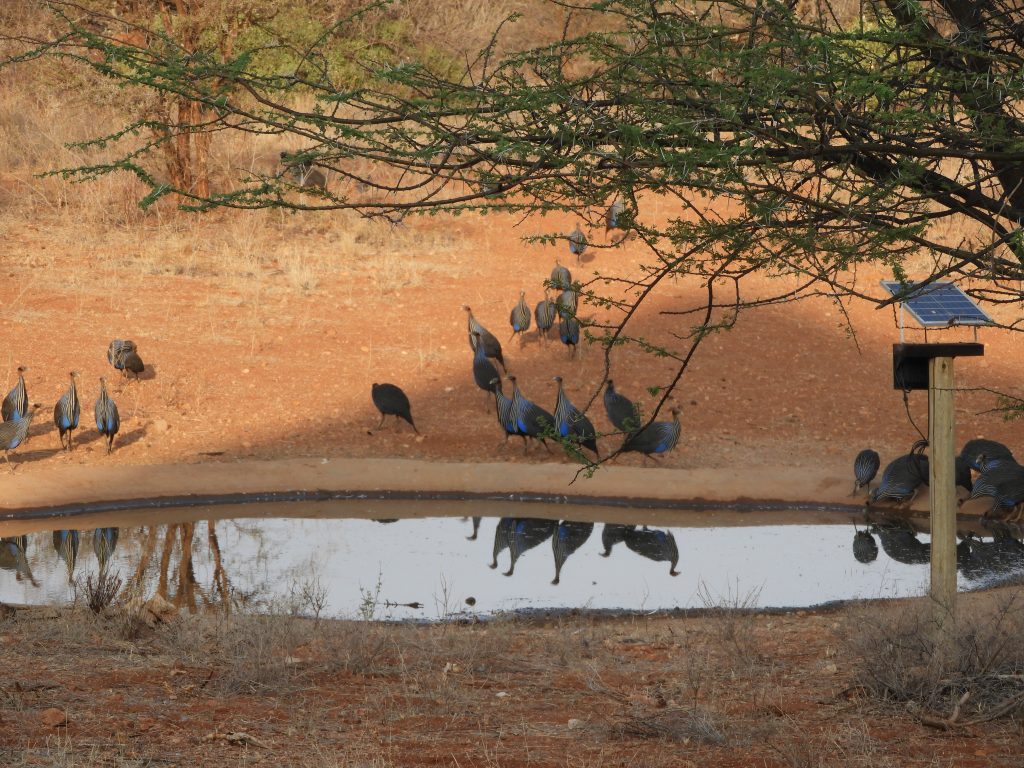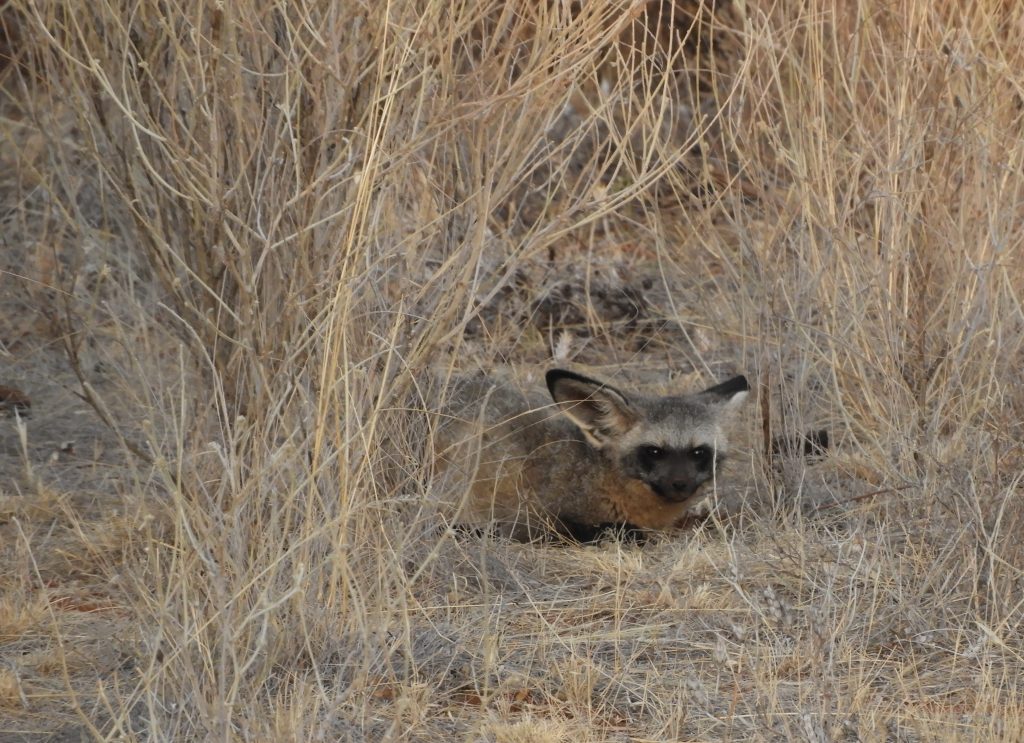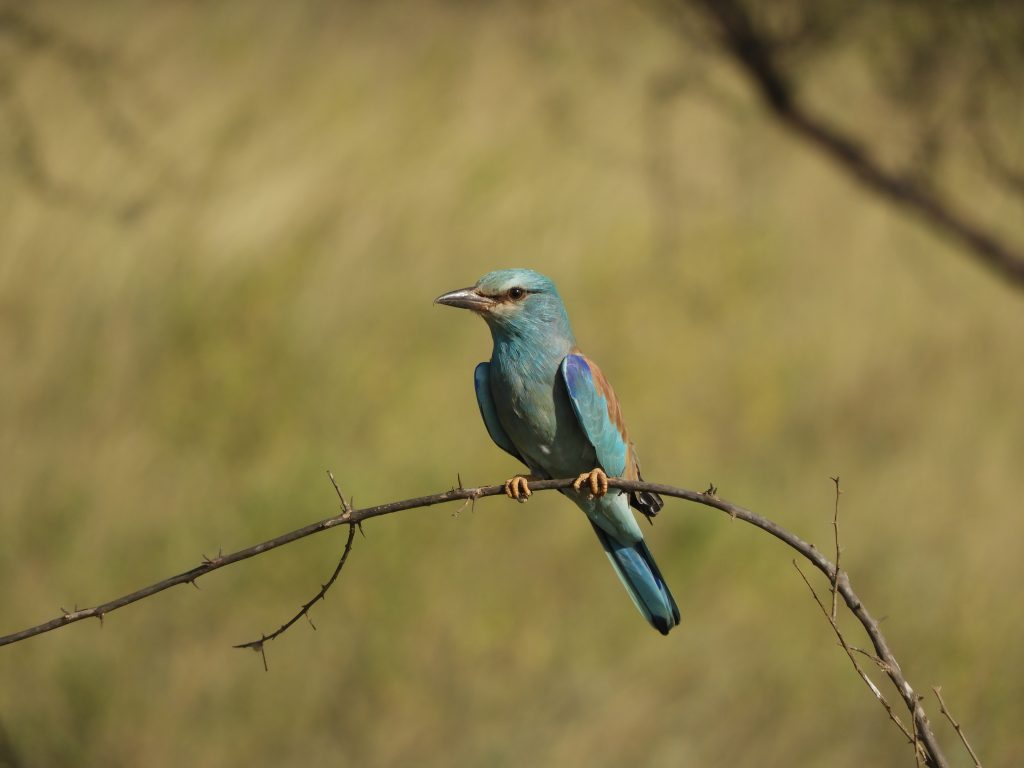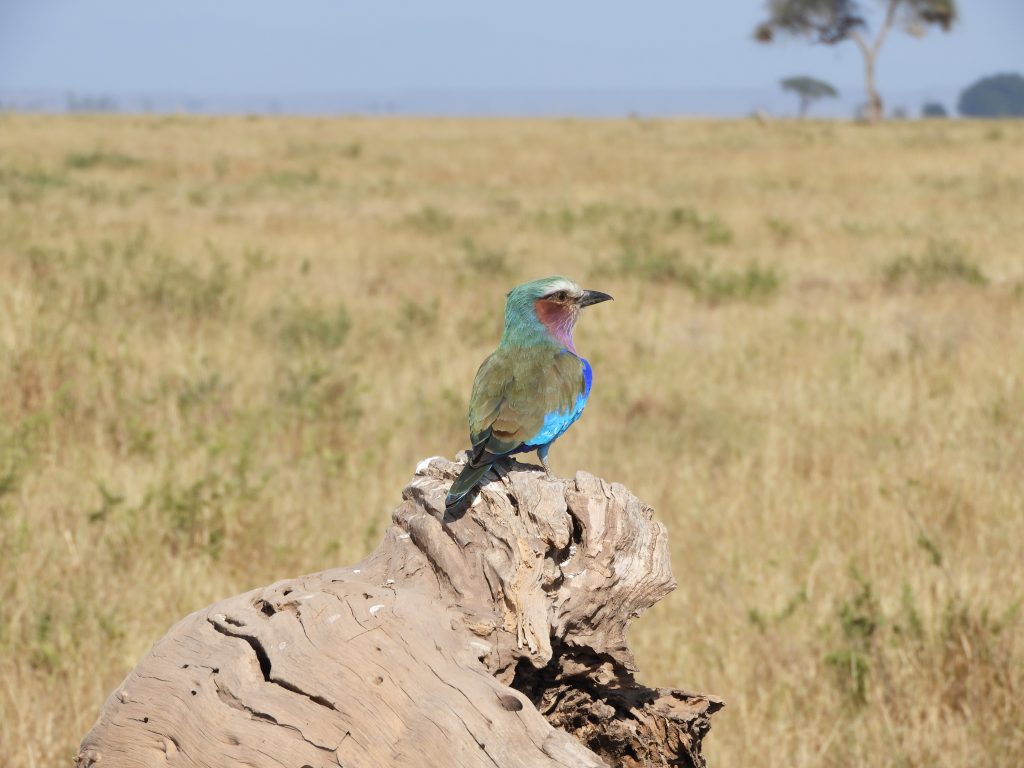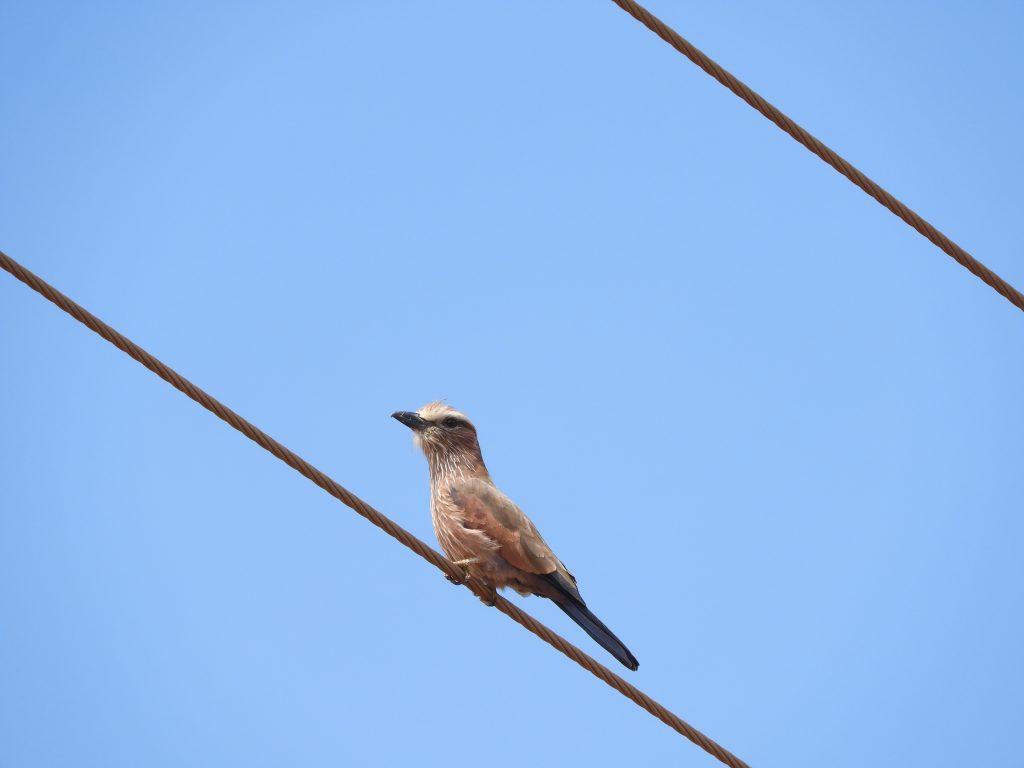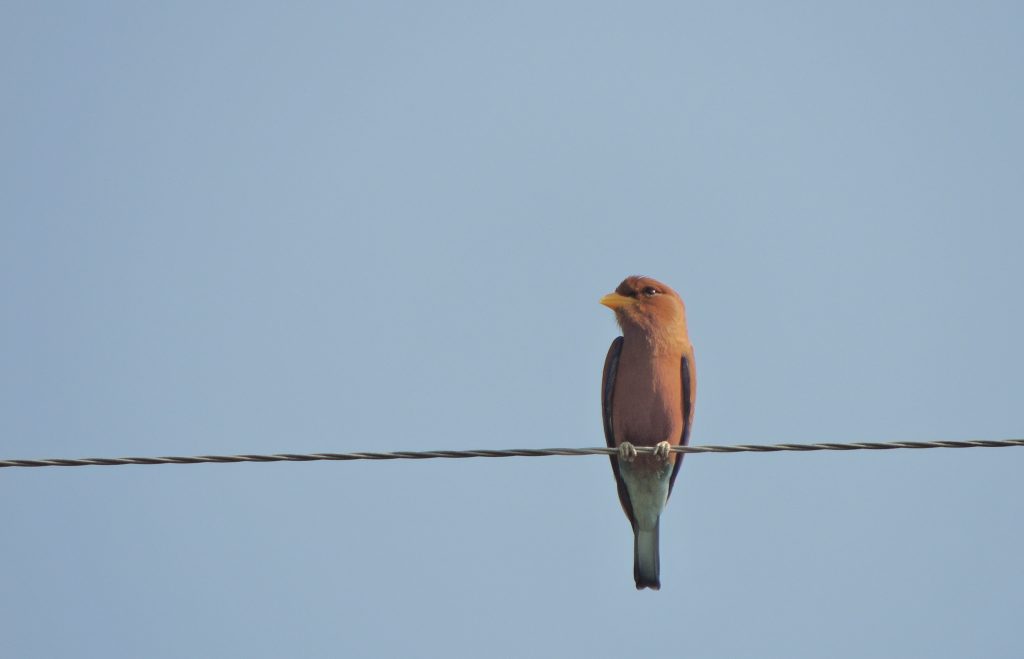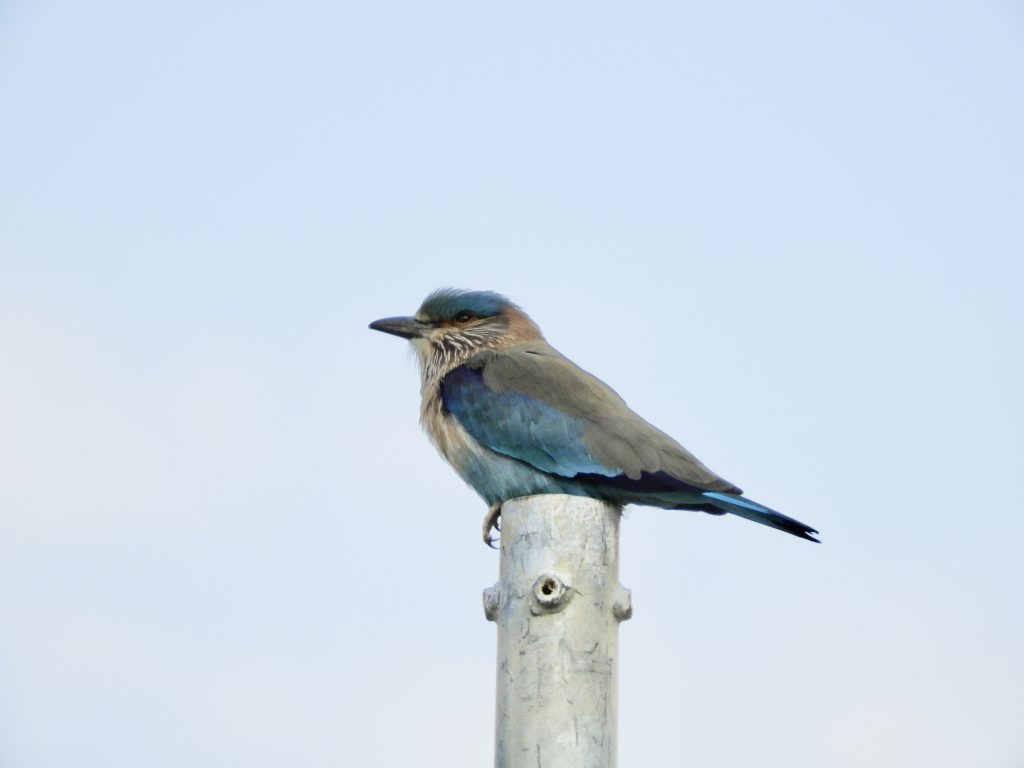
April 6. 2025. Royal Botanical Gardens, Cootes Paradise, Hamilton, ON. Canada. Ordinarily I would not choose two-degree, brisk-northerly-wind weather to go birding. But I’d committed myself to one of our transect walks, which meant a couple of hours walking a defined route and recording all birds seen and heard, only today with gloves and a wooly hat pulled over my ears.
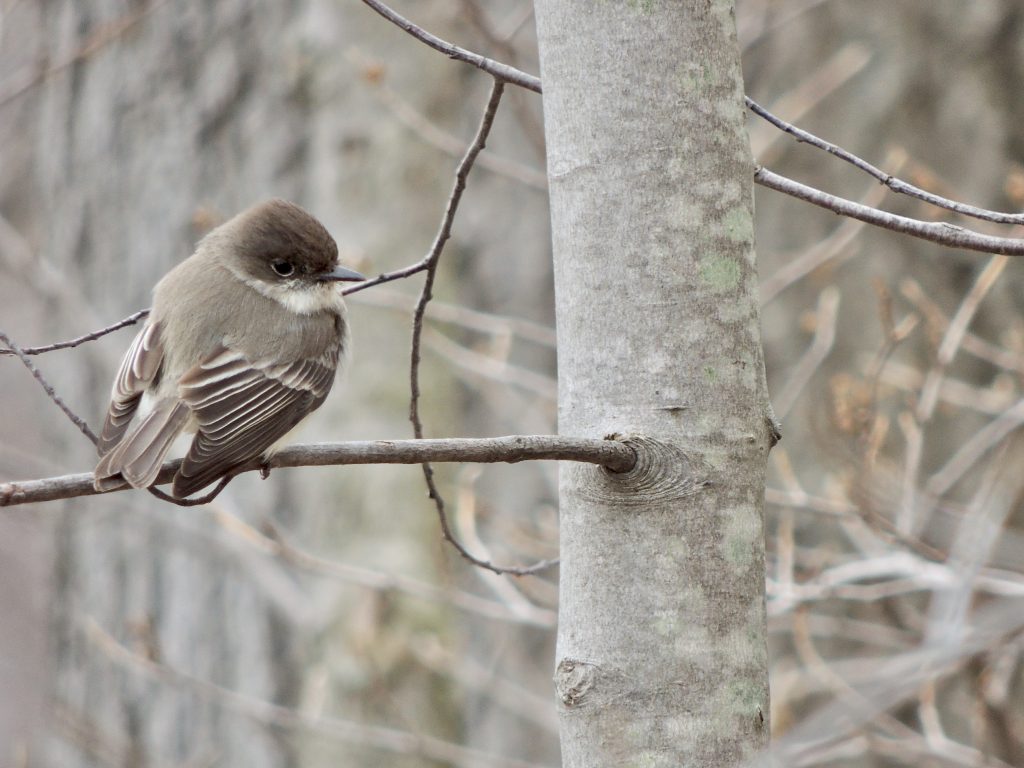
It nevertheless got off to a good start, for as soon as I got out of my car I could hear an Eastern Phoebe calling: an abrupt ‘FeeBee’, repeated at something like 10-second intervals, and non-stop for as long as I was within earshot. Phoebe’s have nested annually in and around the Nature Centre and the gardens. They seek nest sites sheltered by an overhang, often in a porch or under a bridge and their nests are an untidy assemblage of grasses and twigs. They are a welcome flycatcher, always an early spring returnee and not at all shy about it.
Wandering on down to the lake I prepared myself to have to count distant duck-like shapes and there were many Buffleheads, Lesser Scaup and Ruddy Ducks. The latter, Ruddy Ducks, are attractive just-passing-through visitors, they nest in the mid-continent prairie ponds and lakes. In 1948 someone thought they’d be an interesting ornamental introduction to English lakes and gardens, the Ruddys were quite happy to go along with it and promptly started breeding with the closely related Eurasian White-headed Duck. The hybrid offspring were fertile and back-crosses kept the process going. Before long the Ruddys had genetically swamped the White-heads. Aided and abetted by extensive drainage of their favoured habitat in Central Asia, the White-headed Duck is now considered endangered.
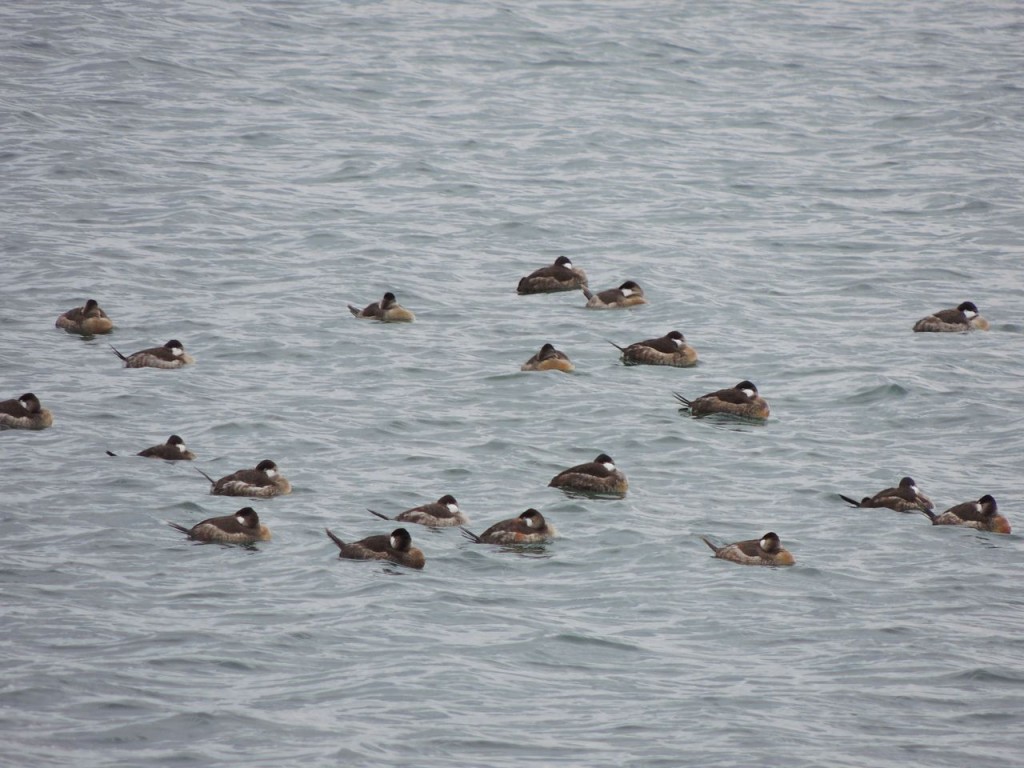
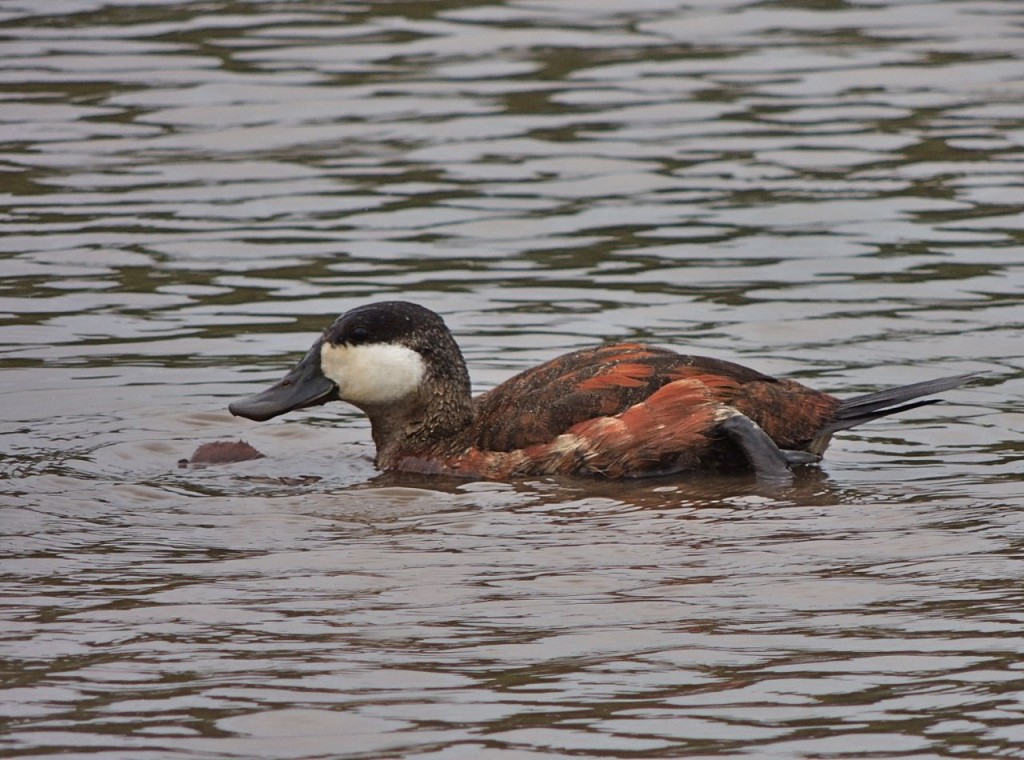
My Birds of the Day came when I scanned the open waters of the lake and was astonished to see a long, dense flock of white birds resting on the water, hundreds of them. It took a moment until I’d processed the clues and realized I was looking at a flock of Bonaparte’s Gulls.
Bonapartes are dainty visitors, and I have often seen small groups of them in spring-flooded fields, always in early April. They migrate in huge flocks in some parts of the continent, but I was happy enough with my very rough estimate of 200, maybe 400, birds. Something happened to stir them, and they rose together in a large, white flashing-wings flock and headed west. Quite breathtaking.
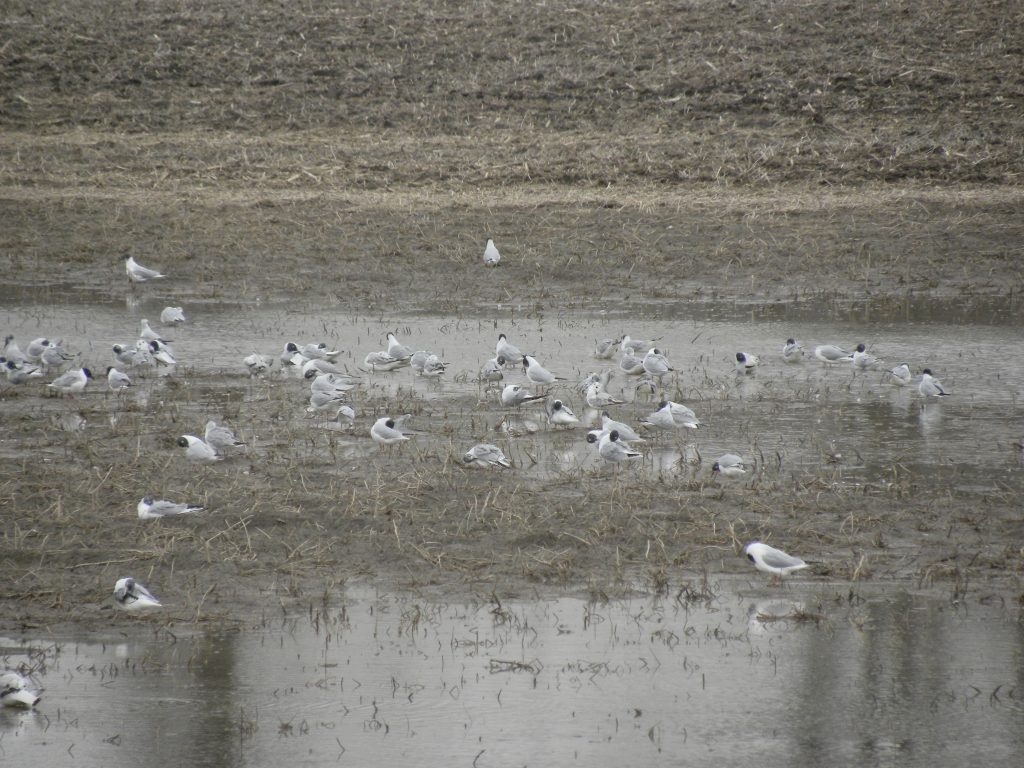
Well after such a good start to the morning things seemed a little quiet, but it did warm up and I was able to pocket my gloves.
